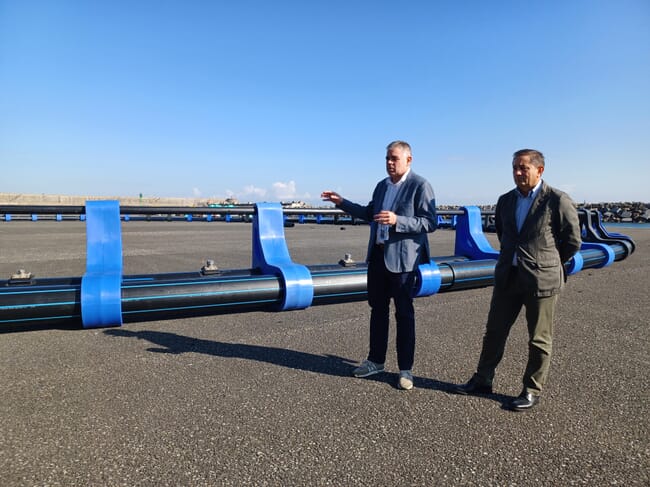
© AZTI
As it currently stands, the bluefin tuna fishery of the Cantabrian Sea is characterised by its low profitability due to the small size of the individuals caught. Seeking to reverse this situation and encourage the recovery of bluefin tuna fishing in this coastal area, Itsasbalfegó – a company created by research organisation AZTI and Balfegó, a Catalan company – will deploy two submersible aquaculture structures off the coast of Getaria.
The initiative plans to catch live bluefin tuna using purse seine gear in collaboration with the Basque fishing fleet. Subsequently, the catches will be fattened at the aquaculture site, with the aim of assessing both their economic and environmental viability.
The cages will be tested during the autumn and winter months, and in the summer of 2025 the pilot test for the fattening of bluefin tuna will begin. If successful, the pilot project will be followed by the installation of more cages from 2026 onwards, depending on the fishing quota for tuna.
“The main challenge will be to determine whether it is viable to use purse seine gear for bluefin tuna fishing in the Bay of Biscay. If this is achieved and, subsequently, the fattening in cages is successful, this project could have a very positive impact on the Basque economy and society, making it possible to revalue fishing quotas, improve the quality of the product and optimise fisheries management,” said Juan José Navarro, assistant director of Balfegó, in a press release.
Prior to the stocking of the cages, scheduled for the summer of 2025, Itsasbalfegó will validate the buoyancy, immersion capacity and resistance of the cages to the adverse weather phenomena of the Bay of Biscay, a key challenge for this type of aquaculture.
“Balfegó has been running a similar facility in L’Ametlla de Mar since 2004, but the conditions in the Bay of Biscay are much more severe, especially in winter. The technology of the cages, with a diameter of 50 metres, is designed to withstand these conditions and minimise the impact of waves,” explained Navarro.




